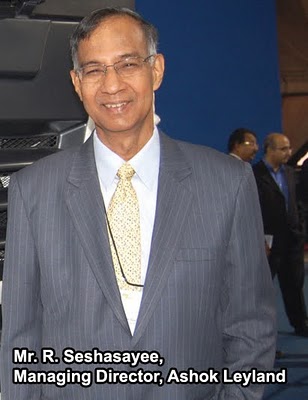If the program is not continued, then commuters are going to feel deceived as in the coming years the STUs, due to lack of support from the Central Government, are very likely to add lesser number of vehicles with much lesser level of specifications and quality requirements. It may not be fair to go back on the commitment given to the commuters”.
Mr. Seshasayee further said: “Bus transportation and more importantly public transportation particularly in cities is going to be an extremely important part of Urban renewal program. You cannot take the burden out of our roads and our transportation system without a good, sound and comfortable public transportation system. The logical step forward will be to take the JNNURM to the next level of providing inter-modal transportation solutions by linking electronically several modes of transportation. We are at striking distance from revolutionising Public transport in our cities. All that is required is a thrust coming from the state and central government and the JNNURM is a fabulous platform to take this to the next stage. Dont stop here and take things back. Take the logical step forward and that will be the most important part of the Urban renewal program as important as water or sewerage”.
Referring to the tremendous growth opportunities in the bus segment, he said: “We are at an inflection point in the growth of the bus industry in the country. Much like what we have seen in China and Brazil, we are very likely to see an explosive growth in bus transportation. Commuters in the city are increasingly exposed to better quality and travel experience and are demanding the STUs to provide good buses and therefore we are seeing the change happening very rapidly. The market in India will continue to be customer driven. It will not accept a standardised product as is the case in most of the developed markets. We believe that the Indian market will continue to be customer driven and we have to cater to the different needs of the customers. For the JNNURM program alone we developed as many as 19 models based on the requirement of the various STUs”.
AL has targeted sale of 18,000 to 20,000 buses during 2010-11, of which 50-60 per cent will be fully-built buses. In the next 3 to 4 years this percentage of fully-built buses could increase to 90 per cent. Therefore the capacity required to cater to this output would be phenomenal.
Currently AL also has its own bus body building facility in Alwar where it will build buses as per its own designs. Currently the Alwar unit is used for building the ultra low-floor city buses and semi low-floor buses for the JNNURM order. The Alwar plant will play an important role in AL’s future plans for the bus business.
